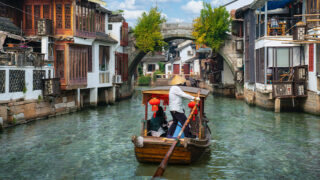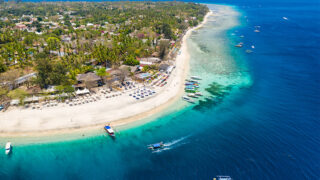India offers a range of amazingly colourful experiences for every traveller, from the stunning Taj Mahal to the forts of Rajasthan, and the highlands of Ladakh to the Goan coast. Before you pack your bags, here are recommended destinations from EL staff and readers, plus a mini guide with all the travel information you need.
Where to stay in Kerala
Traveller: Julia Leimanis, Australian
When my husband and I took our first trip to Thiruvananthapuram, the capital of Kerala, we went in April – it’s the end of the peak season and it’s hot. If you take your children, I’d recommend finding accommodation with a pool so they can cool off during the hottest part of the day. We stayed at the Graceful Homestay for our first two nights. Our friendly driver drove us around the city and to the famous Indian Coffee House. We also had the chance to have a sumptuous sadhya feast at Mothers Veg Plaza.
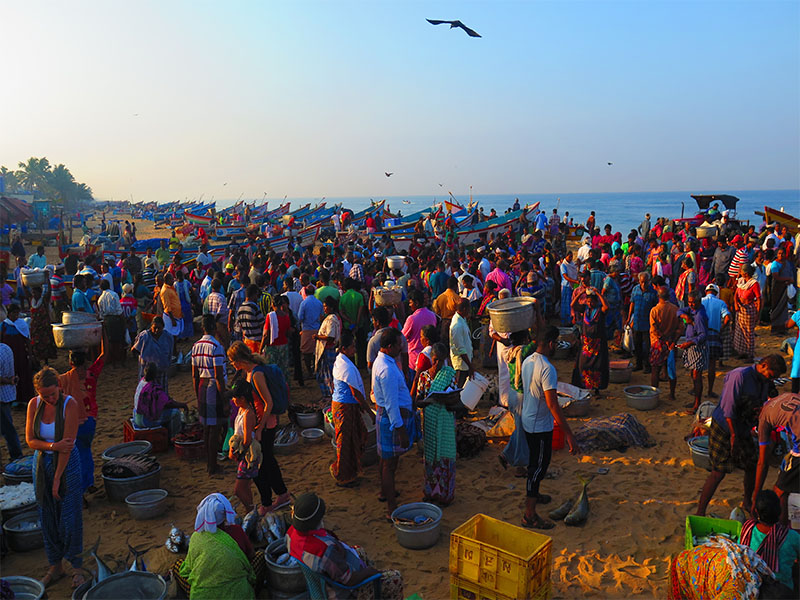
After that, we travelled to the seaside town Varkala, about 45km north of Thiruvananthapuram. We got there by car using the scenic coast road, but you can choose to go via the expressway, which is quicker. Along the way, we passed fishing villages with brightly coloured houses and churches. We stayed at the Kaiya House homestay. While there, we enjoyed local food, morning swims in the ocean and Ayurvedic massages, we had clothes made, and we chatted with the friendly locals. Varkala is also home to the 2,000-year-old Janardana Swami Temple, which is well worth a visit; buy some flowers from the temple sellers and make an offering to one of the deities.
After a couple of days, we went back to Thiruvananthapuram. We celebrated our 19th wedding anniversary by having dinner at Villa Maya, a magnificent restaurant in an 18th-century Dutch mansion.
A wedding in Mumbai
Traveller: Verne Maree, South African
When one of Roy’s colleagues invited us to his son’s four-day wedding, I leapt at the chance – it would be my first trip to Mumbai, and my first wedding in India. “Prepare to be overwhelmed by the noise, the colours, the dancing and the feasting,” one of my Indian expat friends warned me. “And the hospitality shown to guests at a Sikh wedding is out of this world.” How right she was!
We had just three days to see the sights and shop for wedding clothes before the wedding began. The wedding party was spending the week at the outstanding Trident Hotel Bandra Kurla, so we did the same. Most of Mumbai is not pretty, to be honest. The traffic is indescribable, and the sheer mass of humanity and scenes of painful poverty can be distressing for the uninitiated. But we enjoyed shopped for wedding clothes at the upmarket Mumbai Millionaire and at glorious sari emporium Paaneri in Dadar East.
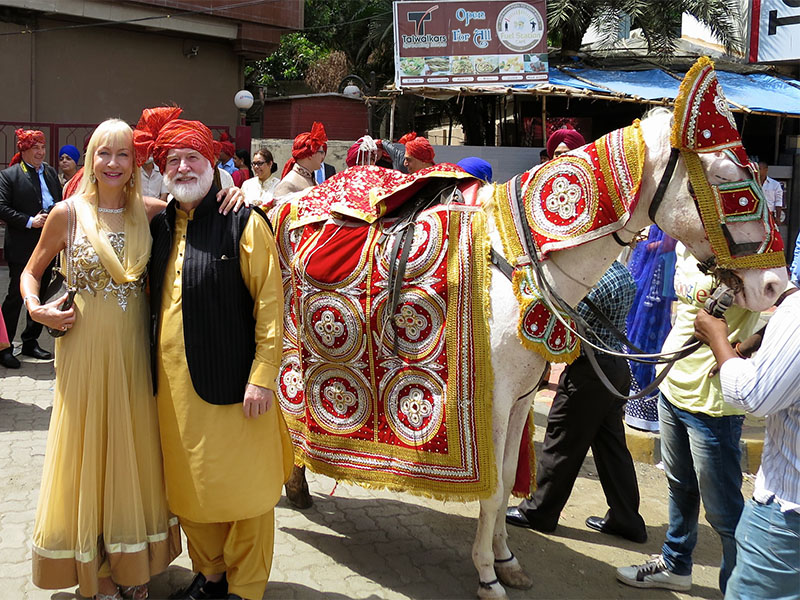
We ticked off sights such as the Gateway to India, Gothic Revival-style Victoria Terminus, Hanging Gardens and the Colaba Causeway market. We had a beer at Leopold’s Café and watched the sun set at the Chowpatty and Juhu Beach, famous for street food such as pani puri. Other highlights were the tranquil CST Museum (previously the Prince of Wales Museum), and tea and Indian snacks at the Taj Mahal Palace’s Sea Lounge.
But the moment that most stood out for me was the wedding day baraat, the noisy, colourful and festive street procession of the groom’s party to the gurdwara; in the midday sun, on dirty pavements and in the crazy Mumbai traffic, dressed in our finery, family and friends danced frantically to the beat of the band and the rat-tat-tat of fireworks – unforgettable!
Where to stay in Udaipur
Traveller: Amy Greenburg, American
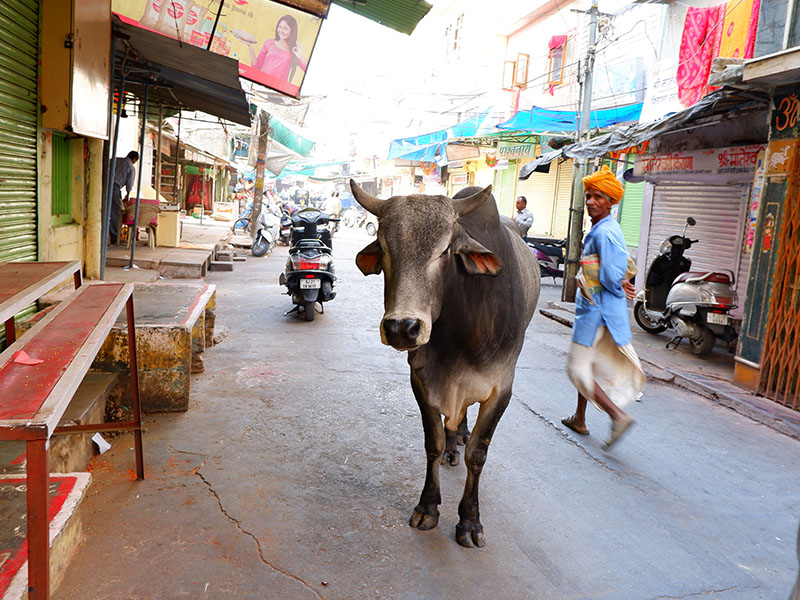
We stayed at The Trident in Udaipur and were really pleased with it. Next time, I’d love to stay next door at The Oberoi Udaivilas, which seems totally splurge-worthy! The 400-year-old City Palace is definitely worth a visit. It’s right on the banks of Lake Pichola and features a blend of Medieval, European and Chinese architecture.
Also worth seeing is Jag Mandir, a fabulous palace built on the lake that’s only accessible by boat (you might recognise it from the 1983 James Bond movie, Octopussy). We had a relaxing lunch at Restaurant Ambrai, right on the lake. It was fabulous – spectacular views of the City Palace and delicious Indian food! We also really enjoyed taking tuk tuks around town; weaving in and out of the narrow, colourful streets and exploring the city from a breezy rickshaw was so satisfying. Just watch out for the cows on the road (they’re everywhere)!
Highlights of the Golden Triangle
Traveller: Danielle Rossetti, Australian
My husband discovered he had a week’s break in between changing jobs so we jumped online and booked a car, driver and guide to see the highlights of the Golden Triangle (indiapersonaltours.com). The limited time we had meant we could only visit the must-sees. It’s not normally how we travel, but I was pleased we saw as much as we did.
Starting in Delhi, the Red Fort was interesting. I asked friends if I would be disappointed with the Taj Mahal – are there too many tourists? Is it run down, being renovated or covered in grime? The answer is no! Nothing can compare to the sight of the sun rising over the dome, reflecting on the gems inlaid in the perfectly balanced architecture. Definitely go in the morning; it’s worth queuing in the dark to be at the front of the line.
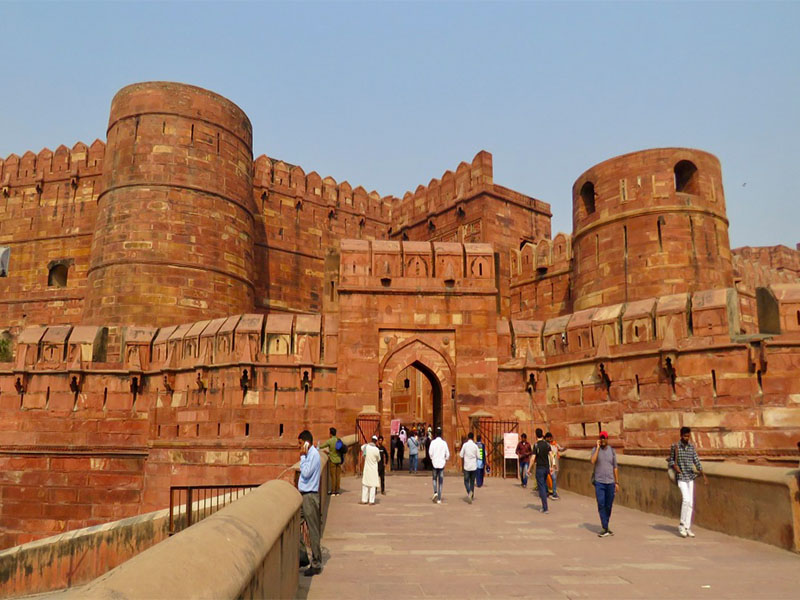
Jaipur is beautiful – not as pink as expected; more a rich terracotta. Sights include the biggest sundial in the world at Jantar Mantar, the City Palace, which is a delicate feminine collection of buildings (many with rooftops with city views), Hawa Mahal (Palace of the Winds) with narrow rooms for ladies of the court to watch the festivities, and the Amber Fort, which is vast and wondrous.
A walk around the old town of Jodhpur revealed hundreds of doors and walls and blue artwork. The Mehrangarh Fort was amazing but my highlight was the regeneration of the old town – young artisans in stores with locally produced homewares, clothing and jewellery, and cafés and hotels in restored buildings. Tip: Have a night-time drink at the beautiful RAAS hotel, looking up at Agra Fort. Also, book dinner at Umaid Bhawan Palace – half the palace is a luxury hotel (lots of Bollywood Stars are married there) and the other wing houses the actual royal family!
I’d recommend a few more days and add in Udaipur and the “Golden City” Jaisalmer, made of sandstone. Next time…
Exploring Darjeeling
Traveller: Soumita Bhattacharya, Indian
I’ve visited Darjeeling since childhood – for holidays, work, and many times just to connect with myself. This place in the foothills of the Himalayas – Darj, as we lovingly call her – screams a loud mantra: “A simple life is a happy one!”
After a flight to Kolkata and connection to Bagdogra, it’s a magical three-hour uphill road trip to Darj. The nip in the air, the clear skies, the majestic mountains, the lush tea plantations, the super-friendly people you pass … all will transport you to a whole new world.
Speaking of transport, when in Darj, ride the UNESCO World Heritage Darjeeling Himalayan Railway. (It’s called the “Toy Train” by locals.) It snakes through loops and tunnels at high altitude, passing sleepy monasteries and postcard scenery of the Himalayan range. Stop at Batasia Loop and absorb the beauty of Kanchenjunga (the world’s third-highest mountain) from afar, while gulping in steamy momos and thupkas.
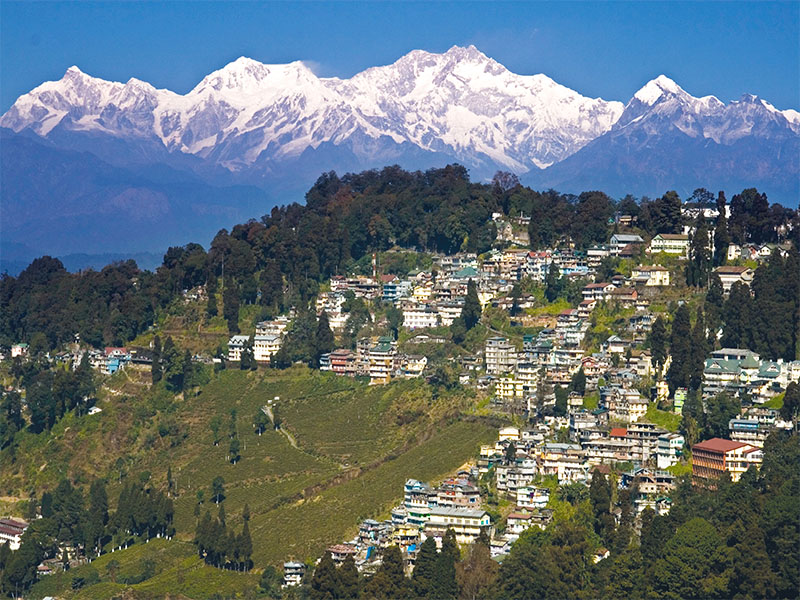
Keep a morning aside for witnessing sunrise over Kanchenjunga from Tiger Hill – the view is an artist’s palette of colours. (It’s rightly said that the best things in life are free!)
Offer your prayers at the Dali Monastery, whose Buddhist chants, hums and drums will usher contentment. The Dalai Lama once stayed here to teach. You can take in Ghum Monastery, Peace Pagoda and Senchal Lake on the same day.
The Himalayan Mountaineering Institute deserves a visit; Tenzing Norgay, Sir Edmund Hillary’s climbing partner, was the first director here. The Zoological Park is close by and worth a visit too, especially with kids.
Darjeeling tea is famed for its exotic flavour. Take a guided tour of the Happy Valley Tea Estate and you’ll come out as close to a tea connoisseur. Pack a few kilos for back home – I recommend the “autumn flush” tea (take a sip and you’ll know why).
Darjeeling will make you value life as a priceless gift. I feel like packing my bags right away as I write this!
A diversion in Kashmir
Traveller: Shamus Sillar, Australian
The start of my nine-day trip to India’s north proves a challenge. I’m supposed to fly from Delhi to Amritsar, home of the famous Golden Temple of the Sikhs. Actually, I do fly to Amritsar; only, we can’t land on account of huge storms thrashing the city. After circling for an age, our pilot turns the plane around and returns to Delhi. (India 1, Shamus 0.)
The aborted flight puts my schedule out of kilter. And that’s how I find myself – after a quick study of the Departures board at the airport – spending two nights in Srinagar, capital of the North Indian state of Jammu and Kashmir, in a houseboat on Dal Lake.

After a rigorous customs procedure at the airport (perhaps reflecting the uneasy political situation in Srinagar at the time of my visit), a cheerful guide drives me along rutted roads to the edge of the lake where I’m deposited onto the comfortable cushions of a traditional rowboat, or shikara.
Known as “the jewel in Kashmir’s crown”, Dal Lake is 20 square kilometres of gorgeous natural wetlands, ringed by snow-topped mountains, and full of flowers, fish and birds. One look and you understand why it was a popular summer retreat during the Raj.
The lake’s famous houseboats are made of carved wood, and some are a century old. They act as floating hotels. The one I get rowed to is an exquisite thing full of cedar panelling, antique rugs and chandeliers, with a charismatic host, Mr Din.
So, just a few hours after the dispiriting mid-air news that Amritsar is a no-go, I find myself enjoying tea and biscuits, looking out at kingfishers and lotuses, and a stunning mountain backdrop, and listening to the swishing oar of the occasional passing shikara. (India 1, Shamus 1!)
# INDIA TRAVEL TIPS
The Basics
Population: 1.44 billion
Capital: New Delhi
Religion: Hindu (80%), Muslim (14%), plus Christian, Sikh, Buddhist, Jain and others
Emergency numbers: 100 (police), 101 (fire), 102 (medical)

Fact file
- The earliest versions of the games Chess (chaturanga) and also Snakes & Ladders (mokshapat) originated in India.
- Approximately 5,000 Mumbai dabbawalas (“ones who carry the boxes”) deliver about 200,000 lunchboxes (dabba) containing freshly made food from their customer’s home to their offices each day.
- Indian Railways is the 13th largest employer in the world with a workforce of 1.4 million.
- Khari Baoli in New Delhi is Asia’s largest wholesale spice market.
- Chail Cricket Ground in Chail, Himachal Pradesh, is the highest cricket ground in the world.
- India is the world’s second largest English-speaking country
Key dates
- Vesak Day, celebrating the birth, enlightenment and death of Buddha.
- Deepavali, or Diwali, the festival of lights – a five-day Hindu festival, which includes the lighting of lamps, plenty of firecrackers and sharing of sweets.
Hot spots and itineraries
Popular destinations include Delhi, Jaipur, Agra, Kerala, Goa, Mumbai, Rajasthan and Bangalore. There are more than 30 World Heritage Sites, including Delhi’s Qutb Minar, the churches and convents of Goa, and the Ellora Caves.
Some itinerary ideas:
- “The Golden Triangle”: Delhi – Agra (Taj Mahal) – Jaipur
- Beaches: Mumbai – Goa – Kochi – Allepey – Kerala backwaters
- Mountains: Delhi – Leh – Himalayas
- Culture & Religion: Kolkata – Bodhgaya – Varanasi
Staying safe and healthy
- Malaria is prevalent throughout most parts of the country, and be aware that Chloroquine is not an effective antimalarial drug in India.
- Be careful with food and water. Drink bottled water, be wary of street food and take anti-diarrhoeal medicine.
- If you visit the Himalayan mountains, ascend gradually; adjusting to high altitudes can give you insomnia, headaches and nausea.
Cultural things
While you’re there, please don’t…
Eat food or pass objects with your left hand; the left hand is used to perform bathroom functions, and is therefore traditionally considered unclean
Before you go, read…
- A Suitable Boy, by Vikram Seth – one of the longest books ever to be published, it follows four families over 18-months as a mother searches for a suitable boy for her daughter.
- Life of Pi, by Yann Martell – a fantastical novel with a dark underbelly.
Before you go, watch…
- … at least one Bollywood film! Start with the classic of the genre, Sholay (1975)
- Gandhi – the story of the leader of the Indian revolt against British rule and his philosophy of non-violent protest.
- A Passage to India – based on the novel by EM Forster, the film focuses on doomed friendships and colonial distrust.
They said it
“The greatness of a nation and its moral progress can be judged by the way its animals are treated.” – Mahatma Gandhi
“In India, ‘cold weather’ is merely a conventional phrase and has come into use through the necessity of having some way to distinguish between weather which will melt a brass doorknob and weather which will only make it mushy.” – Mark Twain, author
“Wherever you go becomes a part of you somehow.” – Anita Desai
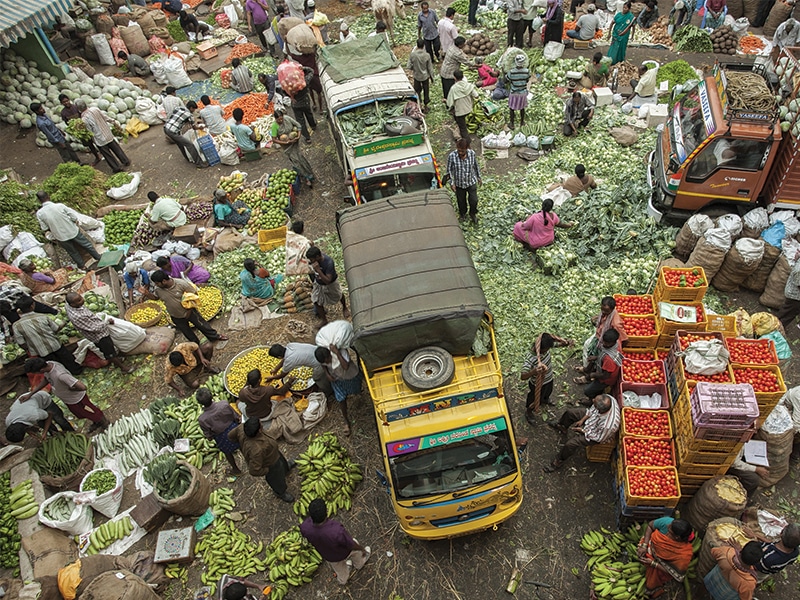
Important questions
Do I need a visa?
Citizens of Singapore, Cambodia, Laos, Vietnam, Philippines, Myanmar, Indonesia, Finland, Japan, Luxembourg and also New Zealand are eligible to apply for a tourist visa on arrival. All other nationalities should apply online. Visit the website of the Indian High Commission in Singapore (hcisingapore.gov.in) for further info.
What time is it in India?
India is 5.5 hours ahead of GMT, 2.5 hours behind Singapore and 4,5 hours behind Sydney.
What’s the money situation?
The official currency of India is the Indian rupee (INR); S$1 is equivalent to around 55 rupees. You will find ATMs in most of the large towns throughout India. If you’re travelling out of town, ensure you have enough cash. Major currencies can be changed at banks and private money changers. MasterCard and Visa are the most commonly accepted cards but are limited to mid- to high-end hotels, restaurants and shops.
When’s the best time to visit?
The best time to visit most areas is from October to March, although January to September is a good time for the south, while northeastern India tends to be best between March and August. Kashmir and the mountainous regions of Himachal Pradesh are most accessible between May and September. Skiing is popular from January through March, while trekking in the Indian Himalayas is recommended from April to November. Beach-goers tend to head to Kerala and Goa from December to May, when the weather is clear and dry.
What’s the lingo?
The official languages of India are Hindi and English. Make a start with these Hindi phrases!
- Hello: Namaste
- What is your name? Aapka naam kya hai?
- My name is __ : Mera nama __ hai
- How much? Kitna
- Thank you: Dhanyavaad
- Yes: Haan (Ha)
- No problem: Koi bhat nahi
Last but not least
Is there anything I should know about meeting the locals?
Press your palms together at chest level while saying “Namaste”. This is often followed by a light handshake. Also, always allow Indian women to initiate contact.
What’s a must-try dish?
Before hitting the restaurants for the huge range of amazing curries and other dishes, try some street food; for example, the ubiquitous chaat comprises dozens of different savoury and sweet snacks that can be eaten on the go.
What should I buy as a souvenir?
Curry powders, carpets and sarees.
Read more about India in our Travel section!

